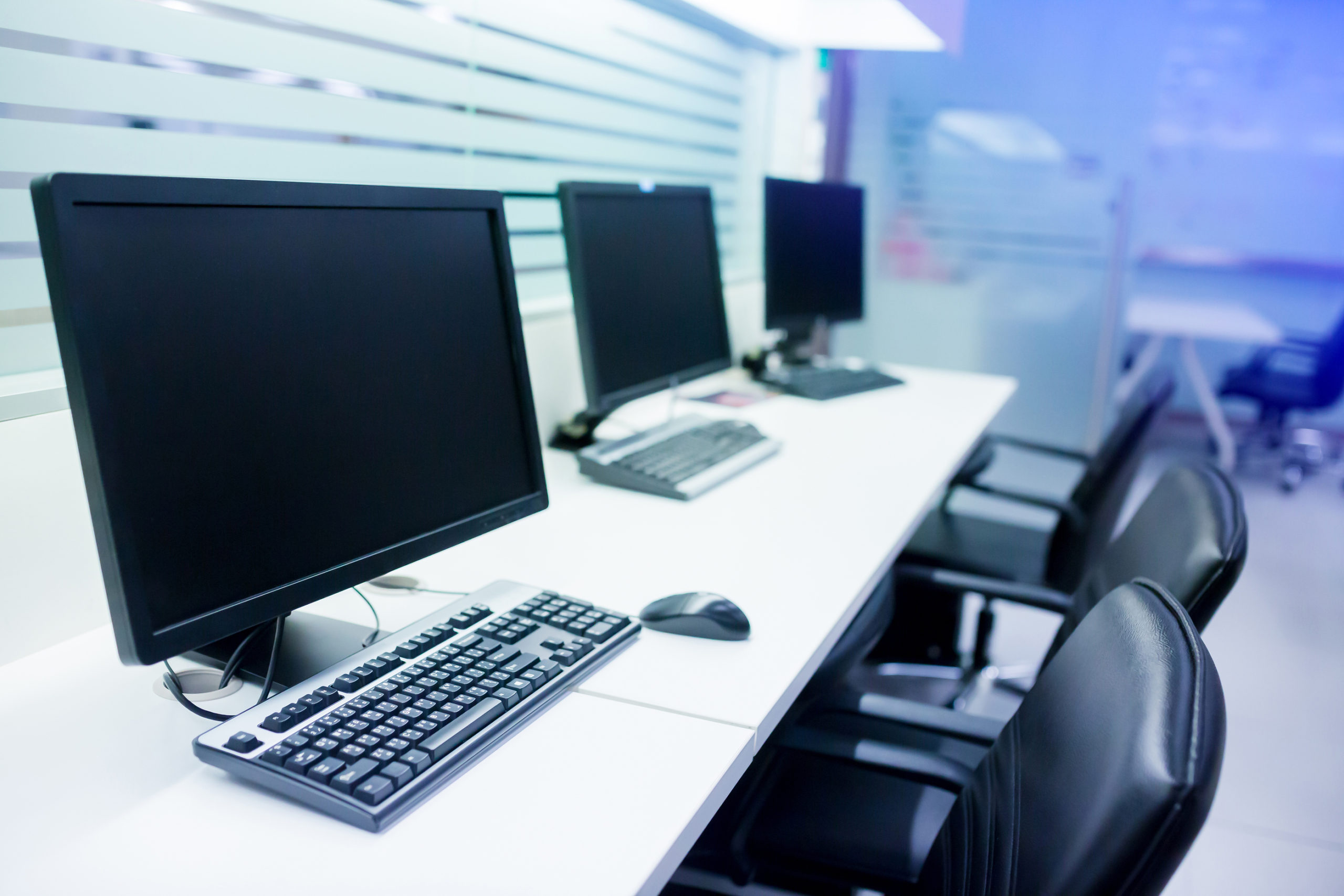Companies may choose them based upon price only or on how they’ll fit on the desk. But there are several other considerations. When it comes to choosing the right monitor for your own PC and those of your employees.
While price is definitely a consideration for any small business. It’s also important to purchase hardware that’s not going to make it harder for people to accomplish tasks during all those hours spent in front of their computer.

The average office worker spends 6.5 hours per day sitting in front of their computer monitor.
Buying the wrong computer monitor can lead to:
- Squinting or headaches from staring into the screen
- Colors looking wrong
- Lack of the types of connection ports you need
- Monitor size being too small and harder to work on
- Monitor having problems too soon after purchase (short lifespan)
All of the technology and technology services that your team uses each day has a direct impact on efficiency. And while the computer they use may have more impact when it comes to productivity.
The monitor is also important to ensuring people aren’t held back by too small screens or monitors that are a bad match for their job needs.
Considerations When Choosing a Computer Monitor
How do you choose the best monitor for your business PCs? You’ll want to consider several factors beyond just the price.
It’s also a good idea to see the monitor in person rather than just online, because it can be difficult to judge quality, color accuracy, and screen size from just a photo.
Here are the factors to considering when monitor shopping.
Monitor Size
Most people who’ve gone to a large monitor from a smaller one, never want to go back. There’s a big difference between a 16” monitor and a 26” monitor.
The larger screen size makes moving applications side by side much easier. And gives you a lot more screen real estate to work with that most people find makes their work take less time.
A study by the University of Utah found that people using larger monitors were able to complete tasks 52% faster than those with smaller monitors.
Of course, you do have to balance the additional price of a larger monitor and extra space it might take up with your budget.
But don’t forget to factor in the increased productivity, which may make buying a larger. More expensive monitor worth it in the long run.
Monitor Connectors
Don’t just assume that any new monitor you buy is going to have the right connectors for your PCs or you could end up with incompatible equipment that won’t easily plug into each other.
You’ll want to check that the outputs from your computer match the inputs for the display. HDMI is typically used on many of the newer PCs and monitors.
Although if you also want the flexibility to connect a laptop to your monitor, then you may possibly need another type of connector for a Thunderbolt cable.
Screen Resolution
You don’t want to just assume that the screen resolution is going to be correct no matter what monitor you purchase.
The resolution refers to the number of pixels on the screen (horizontal x vertical) and the pixels per inch (PPI) is the number of horizontal pixels divided by the horizontal screen dimension.
Generally, the higher the PPI, the better for clarity, however too high can cause things to look smaller on the screen.
This is another reason it’s important to see a monitor in person before purchasing. So you can see if the screen resolution is right for your needs.
Screen Colors
If you have a graphic designer on your team or anyone else with a job requiring accurate color representation on their computer.
Then you’ll want to dive a bit deeper into the color capabilities of a monitor when selecting one.
There are two main things to consider here:
- The Gamut: How many colors a screen can display
- Accuracy: How accurately the monitor displays those colors
There are five different types of color standards that you’ll run across when looking at computer monitors:
- sRGB: This is the most commonly found standard for monitors and TVs.
- Adobe RGB: Designed to offer a broader color gamut and depict colors more realistically than sRGB.
- DCI-P3: Standard that comes from the Society of Motion Pictures and Television engineers. Used often in digital projectors.
- NTSC: Not as widely used as sRGB but has a niche in monitors designed for professional-level video and photo editing.
- EBU: The European Broadcasting Union color standard that is used widely in photography, video editing and graphic design.
Monitor Price
Price is generally one of the main considerations when choosing monitors for your business. You can typically expect to spend anywhere from $200 to $500 per monitor.
Just remember to consider things like warranty. Quality of the monitor and its casing (i.e. does it have plastic feet that will easily break off?).
And productivity versus size when considering price. The cheapest monitor may not actually be cheaper when you consider those other factors.
Get Help Choosing the Best Equipment for Your Office
If you’re unsure which monitors. PCs or other hardware will be right for your office AND give you the best value overall, RCOR’s experts can help you choose wisely!
Schedule a free IT hardware consultation today by calling 919-263-5570 or contacting us online.




